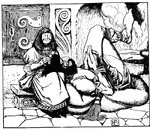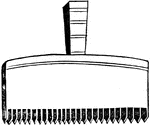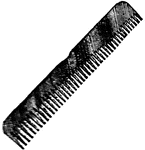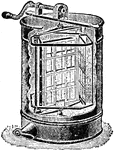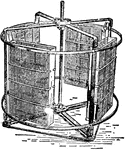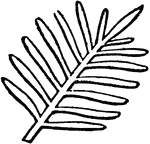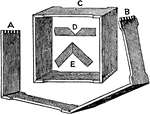Search for "comb"
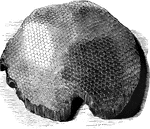
honey-comb
"The comb is made of wax, found in various plants, but which is also secreted by the bees themselves…
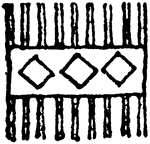
Comb Design
An emblem of the Mohammedan faith to remind the devout that cleanliness is next to godliness. For this…
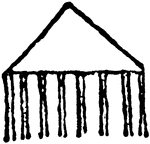
Comb Design
An emblem of the Mohammedan faith to remind the devout that cleanliness is next to godliness. For this…
Triarthrus
"Restoration of Triarthrus Becki, Green, as determined by Beecher from specimens obtained from the Utica…

Hruschka Extractor
"Hruschka's extractor, first brough to public notice in 1865, may be said to have revolutionized the…
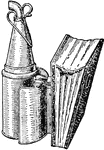
Bee Smoker
Bee smokers are used as protection for the bee keepers. Smoke is used to calm agitated bees.
Singly Pectinate Antenna
Pectinated or comb-toothed type, where the joints are furnished laterally with processes of…

Coxcomb
Cock's-comb gall on elm, Colopha ulmicola- winter egg covered by the skin of the true female.

Using a Grounded Metallic Comb to Reduce Static Charge, Perspective View
"Method of using a grounded metallic comb near the driving belt to relieve the belt of static charges."…
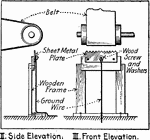
Using a Grounded Metallic Comb to Reduce Static Charge, Front and Side View
"Method of using a grounded metallic comb near the driving belt to relieve the belt of static charges."…
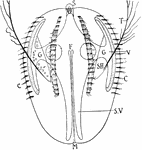
Ctenophore
"Diagram of a Ctenophore. M., Mouth; S., sensory organ; T., tentacle cut short; SH., pouch of tentacle;…
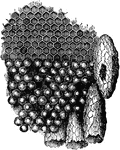
Portion of the Comb
"Portion of the comb, with the eggs occupying the cells. One of the royal cells has been opened by the…

Rall's Headquarters
Johann Gottlieb Rall (ca. 1726 - December 26, 1776 ) was a German colonel in command of Hessian troops…

Ctenopore
The phylum Ctenophora , commonly known as comb jellies, is a phylum that includes the sea gooseberry…
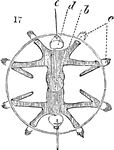
Transverse Section of Ctenopore
The phylum Ctenophora , commonly known as comb jellies, is a phylum that includes the sea gooseberry…
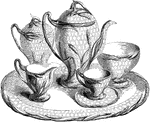
Coffee Service
This coffee service is covered with an open honey comb design. It has handles formed of wheat ears,…

Canada Grouse
"Canace canadensis. Canada Grouse. Spotted Grouse. Spruce Grouse. Spruce "Partridge." Adult: Head smooth,…
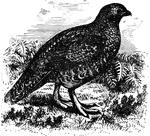
Red Game of Britain
"Lagapus. The densely-feathered feet resemble those of rabbits. No particular feathers on head or neck.…

Three Teeth Comb
A comb is a toothed device used in hair care for straightening and cleaning hair or other fibers. Combs…
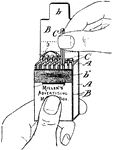
Match Box for Advertising
A matchbook is a small cardboard folder enclosing a quantity of matches and having a coarse striking…
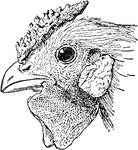
Head of Rose Comb Chicken
A head of the rose comb chicken. The crest on top of the chicken has a distinctive wrinkled feature.
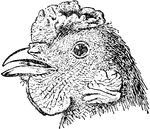
Head of Pea Comb Chicken
An illustration showing the pea comb chicken. The chicken's breed name comes form the comb, or the crest…
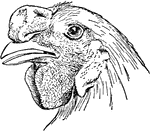
Chicken Head with Walnut Comb
A head of the walnut comb chicken. The breeding of the rose and pea comb chickens results in a walnut…

Single Comb Chicken Head
A head of a single comb chicken. The chicken's comb is smooth and standing on the head. The absence…

Single-Comb White Leghorn Cock
"Leghorns are the best known of the egg-producing varieties or Mediterranean class. They are the premiers…
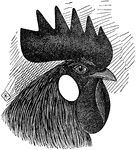
Head of Single-Comb Brown Leghorn Cock
"The comb is single, of medium size, perfectly straight and upright upon the head, free from side sprigs,…
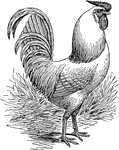
Rose-Combed White Leghorn Cockerel
"The Rose-comb White and Rose-comb Brown Leghorns have a small rose comb, square in front, firm and…
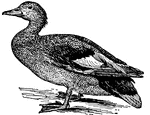
Gadwall Duck
The Gadwall (Chaulelasmus streperus) is a widely distributed duck, appearing throughout Europe and N.…

Bill of Gadwall
The bill of the Gadwall Duck, showing the comb-like 'teeth' that they are known for.
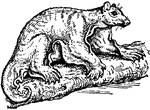
Galeopithecus
Galeopithecus is the generic name of certain mammals from the Malayan region, commonly (incorrectly)…

Drawing Process in the Manufacturing of Jute
After the carding process in the manufacturing of jute is completed, the jute is taken into the drawing…
